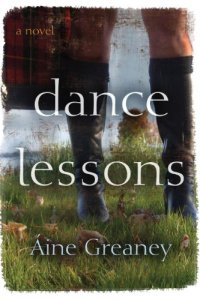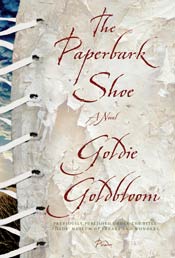Doc by Mary Doria Russell
 Monday, April 4, 2011 at 1:26PM
Monday, April 4, 2011 at 1:26PM 
Published by Random House on May 3, 2011
Doc Holliday and Wyatt Earp are firmly established in the pantheon of Wild West legends, along with Jesse James and Billy the Kid. So many books have been written about them, fiction and nonfiction, that it may seem surprising to find another novel based on one of these gunslingers. It must be their legendary status that draws the attention of writers. Widespread familiarity with the legend becomes the writer's base, and the chance to reinvent or reinterpret an icon has an undeniable appeal. In Doc, Russell embraces the challenge of making the familiar seem new with surprising success.
Behind every legend there's a person, and it is the person, not the gunfighter, that Mary Doria Russell imagines in her story of Doc Holliday's time in Dodge City. Russell underplays the novel's armed confrontations, taking note of how legends build, how tall tales grow: an incident involving six cowboys evolves in the telling until Holliday faces down two dozen. Ultimately Russell deconstructs the legend, deemphasizing Holliday's skills as a gunfighter/gambler while painting a detailed picture of a loquacious, consumptive dentist who seems always a step away from death. The plot, such as it is, involves the apparent murder of an entirely fictitious character, a friend of Holliday and Wyatt Earp, but the mystery of his death is merely a vehicle to drive a deeper story. It isn't the familiar story of the O.K. Corral and Wyatt Earp's confrontation with the Clantons; the novel makes reference to those events in a concluding chapter, but the story effectively ends in Dodge City, before the Earp brothers and Holliday make their way to Tombstone.
Russell begins with an eyeblink view of John Holliday's Civil War childhood and his brief but violent stay in Texas (where he killed a man and was shot by another). By the time Holliday decides to rebuild his tubercular life in Dodge City, he's taken up with Kate, a princess turned prostitute who entrances him with erudition that matches his own. Kate is a significant figure in Holliday's life and in the novel. Kate's affinity for Holliday is based in part on his ability to win large sums of money at the card tables, in part on his intelligence and education, and in part on her inability to understand him. Unlike the other men in her considerable experience, who "were as obvious and as easily dealt with as a phallus," the complex dentist becomes her most memorable lover. To Kate's dismay, it is Doc Holliday's dentistry, not his gambling, that fills him with pride and purpose. Russell portrays Holliday as a compassionate if ill-tempered man who treats the fictitious characters "China Joe" and John Horse Sanders with respect regardless of their race, who understands the difficult lives that drove women to work in bordellos. Russell's Holliday is a man isolated by his intelligence and southern manners as much as his illness and quick temper.
Russell's Dodge City is a lawless land of unchecked freedom, fueled by the seasonal influx of money brought by Texans driving cattle: "They were giddy with liberty, these boys, free to do anything they could think of and pay for: unwatched by stern elders, unseen by sweethearts back home, unjudged by God, who had surely forsaken this small, bright hellhole in the immense, inhuman darkness that was west Kansas." Russell populates Dodge City with fully realized characters, emphasizing the routine and drama of their daily lives rather than the excitement and rough justice of frontier life. Speaking to Morgan Earp about literature, Holliday argues that Raskolnikoff and Oliver Twist's Fagin are interesting characters because they are a mixture of good and bad. Russell's characters are interesting for the same reasons. She creates a Wyatt Earp who is filled with insecurities instilled by an abusive father. The experiences and motives that drive her politicians and villains illuminate their lives.
I can't speak to the novel's historical accuracy, although I can note that Russell, in an afterward, calls attention to a few minor changes she made in the historical record. She also lists the novel's characters, italicizing the few who are entirely fictitious. Frankly, I don't think it matters; writers of fiction are licensed to change the past for the sake of the story. Still, so far as I can tell, Rusell's novel is as true to the past as it is to the artist's purpose: to tell truths even when they are fictional. Doc is a wise and stirring and truthful novel about a hard, determined, complicated man.
HIGHLY RECOMMENDED




